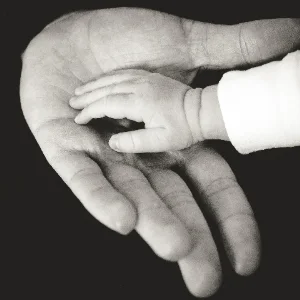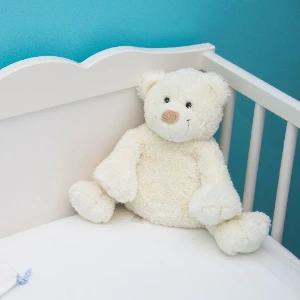The Cinderella Effect - The dark truth behind your stepparents
Updated on 20th October, 2022
Definition of The Cinderella Effect
The
Cinderella Effect is a rather morbid psychological effect that describes the increased tendency for children to receive physical abuse or mistreatment from stepparents rather than biological parents.
Whether this notion
stems from media, cinema, or literature, most people seem to possess an unconscious prejudice relating to how stepparents treat non-biological children under their care. To make matters worse, it seems that psychological research
also supports this notion demonstrating that the Cinderella Effect may be grounded in much more than casual popular belief.

The effect is named after a woman called Cinderella, a fairy tale character mistreated by her vindictive stepmother and stepsisters. In the story, Cinderella is made to work as a scullery maid, who is always made to follow the authoritative orders of her stepmother, Lady
Tremaine. Throughout the story, Lady Tremaine is shown to express love and attention to her biological children. In contrast, only cruelty and neglect were reserved for Cinderella.
This dynamic is exactly what the Cinderella Effect exposes in real life, where a consistent pattern arises between abusive behaviors of adults toward children who are not their biological kin. If we consider this carefully, we
begin to see that there may be an underlying cognitive bias driving this behavior from stepparents and not biological parents. What is the difference, and why is this behavior unique to stepparents?
What is the Cinderella Effect?
To explain this effect, researchers turn to evidence from evolutionary psychologists who state that the mistreatment of stepchildren may stem from traits developed throughout evolution. Let’s break this down together. We all
know that parents devote significant attention, material, and time to care for their offspring. Counter to many survival theories, parents also showcase behaviors that go directly against their own survival if it means that it
would have a positive consequence on their children!

Effectively, parents have some natural instinct to care for and support their children to ensure they have the best possible upbringing they could receive. This is because parents are naturally hard-wired to provide their children with the best means of survival. If this was the case, would stepparents express the same behaviors if they had to rear children? The short answer - No. This is because parents are evolutionarily wired to care for children carrying their own genes, not someone else’s. Consider the natural desire of parents to care for their genetic offspring as an advantage, as no matter what they go through, they will always be wired to think and behave in a way that benefits their child. However, if you are a stepparent, you may not have that natural urge to protect or care for your stepchild, which is when the issues arise. This is not to say that every stepparent will abuse their stepchildren, because if you possess a good heart as a stepparent, you will most likely communicate that in the way you treat children.

However, stepparents who do not possess a caring disposition are at risk of developing nasty and vindictive attitudes towards the child there
are “caring” for. For example, one explanation behind the Cinderella Effect is that stepparents are more likely to abuse children as acts of revenge and resentment against their co-parent. Because adults are more socially
intelligent and able, it may be challenging to express resentment against them.
In contrast, children are completely vulnerable, which makes them easy targets for vengeful adults to pick on. Another driver of the Cinderella Effect, which is very well studied in psychological research, is the tendency for people
to find unhealthy methods of coping with their repressed emotions.
In the case of stepparents, one coping mechanism would be to release their unwanted emotions on their stepchildren through abusive and manipulative behaviors. Although this concept may seem highly repulsive to most people, the
propensity to participate in these dark behaviors is an unfortunate pattern many follow during romantic relationships involving stepchildren.
History of the Cinderella Effect
The Cinderella Effect was first proposed in the early 1970s when British
psychiatrist Peter Scott (1914-1977) looked into a sample of individuals who had “fatally battered infants” and found that 52 percent of the sample were stepfathers. Although no formal analysis was conducted on this raw
information, this is when researchers believed the Cinderella Effect first entered academic and research circles. Following this emergence, various studies have been conducted in order to see if the relationship between stepparents
and child mistreatment could be validated. Unfortunately, most studies found positive evidence directly linking child mistreatment and abuse to stepparenthood.
The Cinderella Effect became progressively more and more evident
when researchers Martin Daly and Margo Wilson (2007) undertook an extensive scan of police reports, clinical data, victim reports, and homicide data to conclude that: Stepchildren in Canada, Great Britain, and the United States are
at a greater risk of receiving child maltreatment compared to children with biological parents. Taken aback by these findings, both Daly and Wilson wished to see if they could come up with an explanation for this morbid phenomenon
and used an evolutionary perspective to do so. This is where they found that stepparents do not possess the evolutionary instinct of child-rearing for children that do not share their genetics. Examples of this could be found
throughout evolution, where humans and animals possess an innate bias towards their kin and are less responsive to those who are unrelated to them. This is where the saying “The bond of family” comes from.
Did you know? – The Cinderella Effect could be universal in the animal world! It is not uncommon for a male lion to kill his mate’s cubs that
were fathered by other male lions. The male lion
does this because they pose a competitive threat to his own cubs. Hence, he wants to give his own offspring the largest advantages possible for survival.

Case Examples of the Cinderella Effect
Case 1: One prominent case of the Cinderella Effect was the homicide of 17-week-old baby Kaleb Baylis Clarke by his biological mother’s boyfriend, Jesse Vinaccia.
Vinaccia had recently moved in with Erin Baylis Clarke and allegedly took care of Kaleb while his mother was at work. Over the following weeks, Vinnacia would remain home close to Kaleb and be seen posting multiple photos of him
and the baby on social media sites such as Facebook and Instagram. During this period, Kaleb’s biological father sent Vinaccia a personal message informing him that he needed to stop posting pictures of his son daily.

Reports state that this incurred a sharp anger outburst from Vinaccia, who acted it out on Kaleb, whom he was allegedly taking care of. More specifically, Vinaccia had taken hold of Kaleb and shaken him repeatedly before laying
him down on the ground. When Erin returned home, she found the boy largely unresponsive. She immediately called the ambulance, finding evidence of brain contusions and internal bleeding within the child’s skull. When questioned
about this, Vinaccia reported that he may have accidentally placed the child on his cot a bit too ‘roughly.’ Still, forensic evidence that was collected at the hospital said the contrary. A week later, Kaleb died in the hospital
due to his injuries, and Vinnacia was arrested for child homicide.
Case 2:
Another case of the Cinderella Effect is the dark story of Ari Sherfield, whose life drastically changed after her stepfather entered her
life at age 7. Her stepfather, whose name remains unknown, had his own biological children, which he favored much more over Sherfield. Much like Cinderella, Sherfield was charged with doing housework and taking care of all of her
younger siblings. If she made any mistakes or mishaps during his time in the house, her stepfather would take this opportunity to abuse her verbally and physically. The abuse would arise in response to mundane things such as
“breathing too hard” or “making too much noise while she was walking.”
To this day, Sherfield still does not know why she was mistreated in this way but stated that her family’s dynamic drastically changed when her stepfather entered her life. She believes that her abuse originated because her family
became much more religious and conservative because of her stepfather, and as the only person who rebelled or spoke out, she would become the target of abuse by her parents. Today, Sherfield has managed to cut herself off from the
rest of her family and spreads awareness of parental abuse on social media to support victims who may be going through similar situations.
Case 3:
Australian girl Charlize Mutten was
a 9-year-old when she disappeared from her stepfather’s property. Since she was 5, Mutten lived with her maternal grandmother in a town called Coolangatta. Her parents split up just after she was born, resulting in her losing
contact with her biological father. To make matters worse, her mother, Kallista Mutten had been sentenced to three years in jail after being charged with dangerous driving and driving under the influence of illicit substances.
Because her mother was in jail, Mutten’s care came under the charge of her mother’s fiancé, Justin Stein.

A Beautiful Quote
- Nelson Mandela
Questions and Answers
What is the most striking case of the Cinderella Effect?
The case of Emani Moss stands out as one of the cruelest and most reprehensible cases involving the Cinderella Effect. Tiffany Moss, aged 36, starved and killed her stepdaughter Emani Moss who was aged just 10. She did this while feeding and looking after her own two children. Emani was kept without food and water for weeks until her weight was only 32 pounds, which led to her death. Tiffany Moss was given the death sentence for her gruesome crime.
Who coined the name Cinderella Effect?
The effect was named by Martin Daly, a professor of psychology from Canada in the 1970s.
What is the explanation for the Cinderella Effect from the evolutionary psychology standpoint?
The explanation is that the lack of shared genes and the attachment bond since birth between the stepchild and the parent leads to lesser interest in the well-being and focus of the child. The attachment bond is more pronounced when the child is two or less.